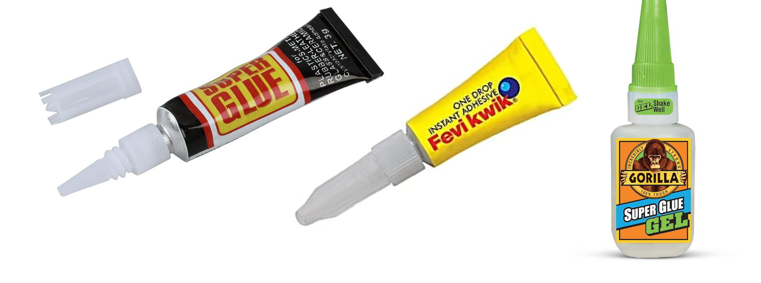Super Glue in First Aid Kit: A Good Idea?
Share

You’re flipping through a stack of papers and ouch! Paper cut. What do you reach for first – the box of bandaids in your first aid kit or that handy dandy super glue that lives in the drawer of random things in your kitchen? OK, maybe super glue isn’t needed for that little, but painful, paper cut, but perhaps you’ve used it for a larger cut in the past. There’s no doubt that super glue is an effective adhesive but when you’re dealing with more severe cuts or open wounds, a household fix just isn’t going to ‘cut’ it. It’s very important to know when to seek proper medical attention over at-home first aid care.
Is superglue a good idea for sealing up broken skin?
As its name implies, super glue is super good at fixing things that are broken. But does it have equal performance sealing up two pieces of wood as it does on split skin? Actually, its use as a skin adhesive has actually been around for quite some time. Super glue’s skin-sealing properties were first put to the test back to World War II when it was used to close battle wounds as a quick and waterproof emergency measure. While effective, it unfortunately came with side effects like damaging the tissue around the wound and irritating the nose, throat, lungs, and eyes. Since then, much safer cyanoacrylate options have been developed.
Now, super glue (also known as skin glue or surgical glue) is used medically under certain circumstances as an alternative to stitches for small wounds that are not very deep, wide, prone to infection, or on highly mobile areas like the joints, mouth, feet, hands, etc. Super glue is not recommended for use on deep wounds, jagged wounds, puncture wounds, animal bites, burns, wounds on eyes, lips, or genitals, contaminated wounds, mobile areas, or stretched skin areas like the forehead. After the adhesive has been applied, it’s important to take care of the site by (a) not picking at the adhesive and (b) not using antibiotic ointment on top of the glue as it can dissolve the adhesive.

– For your toolbox (Super glue, Krazy glue, Fevi quick)
– For your first aid kit (Dermabond, SurgiSeal, Histoacryl, Indermil, GluStitch, GluSeal, LiquiBand)
It’s true that skin adhesives offer a variety of benefits, when used in the right scenario. They dry quickly upon application and offer a painless treatment experience, with no sedation required. This is especially good news for parents who prefer their children not to undergo sedation for the treatment. Most often, when the adhesives are used, follow-up visits are typically not needed either. While these adhesives are effective, ultimately, when dealing with injuries, the best outcome for you or your child can be assured by visiting a health care provider who can properly treat the wound.
Super glue can be a viable option if used in the right situations (small and clean-cut, not too deep, and not infectious). If you choose to use household super glue or even over-the-counter adhesive products, do so with caution and a full understanding of the risks, including infection and possible scarring.
References:
1. Bednarz B, Thakkar M, Wright T. Skin Adhesives: A Solution to Minor Cuts and Abrasions on the Surgeon’s Hands. Surg Infect (Larchmt). 2020, 21(5):472. [Pubmed]
2. Kelly EJ, Terenghi G, Hazari A, Wiberg M. Nerve fibre and sensory end organ density in the epidermis and papillary dermis of the human hand. Br J Plast Surg. 2005 Sep;58(6):774-9. [Pubmed]
3. Gordon Irving. The role of the skin in peripheral neuropathic pain. Eur J Pain Supp. 2010. 4(2):157-160. [Sciencedirect]
4. Image credit – Rogerbrownart
If you enjoyed our content, please share, comment, like and follow us on your favorite platforms!
.
.

